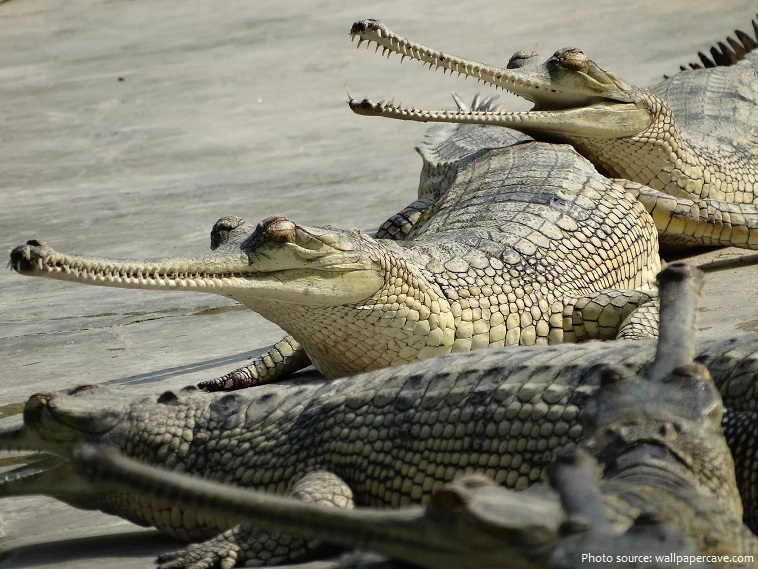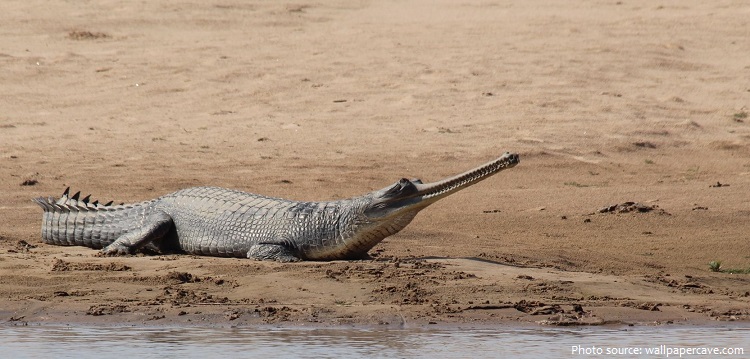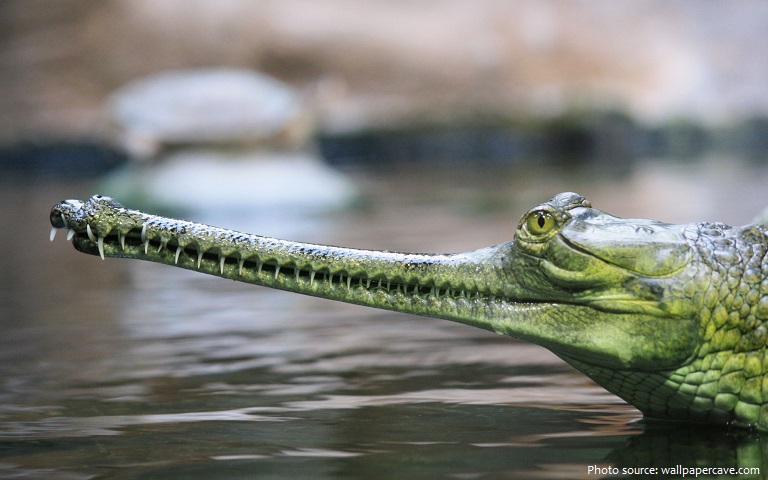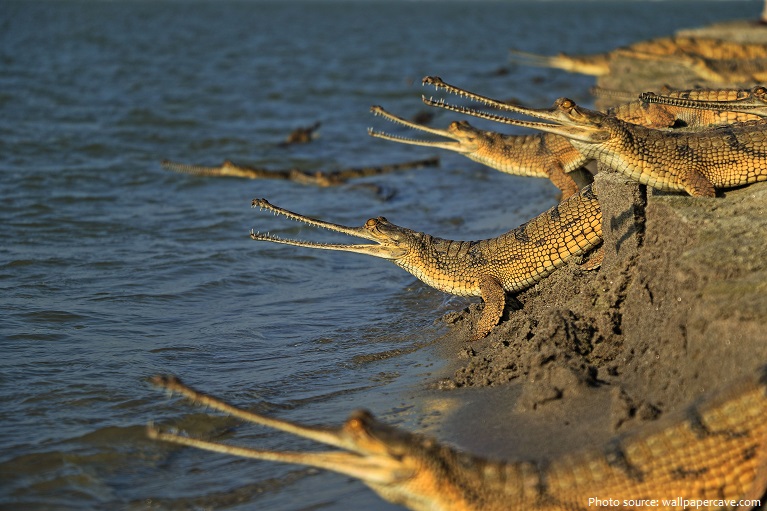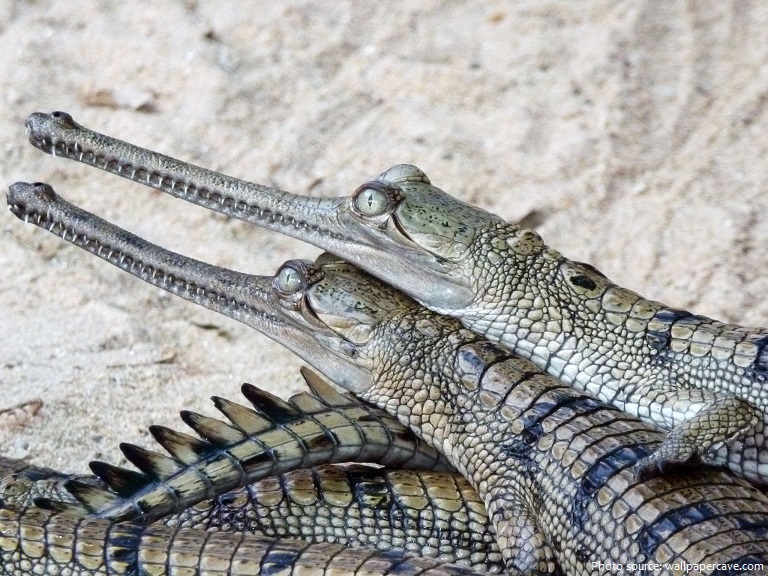The gharial (Gavialis gangeticus), also known as the gavial is one of two surviving members of the family Gavialidae.
They are a group of crocodile-like reptiles with long, narrow jaws.
The gharial once thrived in all the major river systems of the northern Indian subcontinent, from the Indus River in Pakistan and the Ganges to the Irrawaddy River in Myanmar.
By 1976, its range had decreased to only 2% of its historical range, and fewer than 200 gharials were estimated to survive. In 2019, the global population was estimated at maximum 950 individuals, including 500 mature adults.
Gharials live in clear freshwater rivers with fast flowing currents.
The lifespan of gharials is not exactly known, however, it is thought to be around the same span as other reptiles being 50 – 60 years in the wild.
Fisherman that live near gharials believe that they can live as long as 100 years old, though this has not been confirmed.
Gharials are one of the largest crocodilians in the world.
The average size of mature gharials is about 4–5 meters (12–15 feet) and weight about 160 kg (350 lb).
A 6.55 meters (21.5 feet) long gharial was killed in the Ghaghara River in Faizabad in August 1920.
Gharials are dark brown to greenish brown on top with a yellowish white to white underneath.
The scales of gharials are smooth, which is different from most crocodiles and alligators.
The snout is long and slender, specialized for catching fish. The snout shape changes throughout the lifetime, usually becoming longer and thinner as individuals get older. There are between 106 and 110 razor sharp teeth in the jaws.
The tail is well-developed and laterally flattened. Together with the webbed feet it provides tremendous manoeuvrability in deep water. On land, a gharial can only slide on its belly and push itself forward.
Gharials can swim speeds of 24 km/h (15 mph).
Adult gharials primarily eat fish, while juveniles also feed on insects, crustaceans and frogs.
Gharials aggreggate in basking and nesting areas but are generally solitary.
The mating season is during November through December and well into January. The nesting and laying of eggs takes place in the dry season of March, April, and May.
Between 30 and 50 eggs are deposited into the hole that the female digs up before it is covered over carefully. After about 90 days, the juveniles emerge, although there is no record of the female assisting the juveniles into the water after they hatch (probably because their jaws are not suited for carrying the young due to the needle like teeth). However the mother does protect the young in the water for a few days till they learn to fend for themselves.
The gharial is listed as Critically Endangered on the IUCN Red List.
It does not attack humans but apparently does feed on corpses set afloat in funeral ceremonies on the Ganges River.
The word “gharial” is derived from the word ghara, which means mud pot. It was misread by Europeans who changed the word to gavial. Thus, this species is known both as gavial and gharial.
Local names for the gharial include ‘Lamthore Gohi’ in Nepali, ‘Ghrial’ in Hindi, ‘Bahsoolia Nakar’ in Bihari, ‘Mecho Kumhir’ in Bengali and ‘Thantia Kumhira’ in Odia language.
The gharial probably evolved 42 million years ago.

